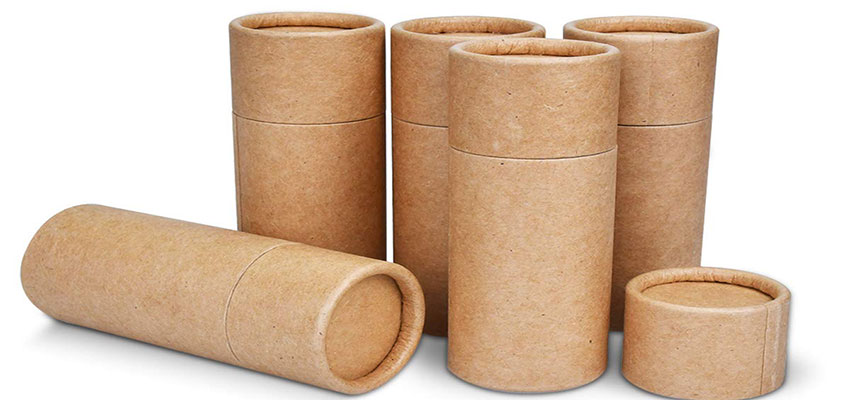In the dynamic and competitive world of business, packaging plays a vital role in product presentation, protection, and consumer engagement. Among the various packaging options available, cardboard tube packaging has gained significant popularity for its versatility and eco-friendly attributes. However, choosing the right cardboard tube packaging for your business is crucial for achieving success. In this article, we will explore the factors to consider and the benefits of selecting the perfect cardboard tube packaging.
1.Understand Your Product:
Before diving into the world of cardboard tube packaging, it’s essential to have a deep understanding of your product. Consider its size, shape, fragility, and any specific requirements for protection or display. Knowing your product inside and out is the first step in choosing the right packaging.
2.Material Matters:
Cardboard tubes come in various materials and thicknesses. Consider the weight and fragility of your product when selecting the material. For lightweight items, thinner cardboard may suffice, while heavier or delicate products may require thicker, more rigid options. Additionally, explore eco-friendly materials to align with sustainability goals.
3.Customization and Branding:
Cardboard tubes offer ample opportunities for customization and branding. Your packaging should reflect your brand’s identity and values. Consider printing options, such as full-color printing or embossing, to create a unique and eye-catching design. Make sure your packaging conveys your brand’s message and creates a memorable unboxing experience for customers.
4.Size and Shape:
The size and shape of your cardboard tube packaging should perfectly fit your product. An ill-fitting package can lead to damage during transit and may not effectively showcase your product. Customization allows you to create tubes that snugly accommodate your items, ensuring both protection and presentation.
5.Closure and Sealing:
Consider how you want your tubes to close and seal. Cardboard tubes can have various closure options, including friction-fit caps, metal or plastic plugs, or even magnetic closures. Choose a sealing method that complements your product and adds to the overall user experience.
 6.Functionality and Accessibility:
6.Functionality and Accessibility:
Think about how customers will interact with your packaging. Is it easy to open and access the product? User-friendly packaging enhances customer satisfaction and encourages repeat business. Consider features like pull tabs or tear strips for easy opening.
7.Environmental Sustainability:
In today’s eco-conscious market, sustainable packaging is a significant selling point. Opt for cardboard tube materials that are recyclable, biodegradable, or made from post-consumer recycled content. Highlight your commitment to sustainability in your branding and marketing efforts.
8.Cost-Efficiency:
Balancing quality and cost is essential for any business. While custom cardboard tube packaging may have a higher upfront cost, it can pay off in the long run by enhancing your brand image and reducing product returns due to damage.
9.Shipping Considerations:
Think about how your products will be shipped and distributed. Cardboard tubes should be designed to withstand the rigors of the shipping process, protecting your products from damage during transit.
10.Testing and Feedback:
Before committing to a large production run, consider testing your cardboard tube packaging with a smaller batch of products. Collect feedback from customers and make necessary improvements based on their experiences.
Eco-Friendly Solutions: The Advantages of Cardboard Tube Packaging
In an era where environmental consciousness is paramount, businesses are actively seeking eco-friendly packaging solutions that align with both consumer expectations and sustainability goals. Among these alternatives, cardboard tube packaging has emerged as a standout choice. Not only is it versatile and practical, but it also offers a plethora of environmental advantages. In this article, we explore the benefits of cardboard tube packaging and why it’s a smart choice for eco-conscious businesses.
1.Sustainability at Its Core:
Cardboard tube packaging is inherently eco-friendly due to its primary material: cardboard. Cardboard is a renewable and biodegradable resource, often made from recycled paper fibers. Using cardboard reduces the demand for new raw materials and minimizes the environmental impact associated with packaging production.
2.Minimal Waste Generation:
One of the standout advantages of cardboard tube packaging is the minimal waste it generates. Unlike some traditional packaging materials that contribute to excessive landfill waste, cardboard tubes are fully recyclable. Consumers can easily recycle these tubes, giving them a second life as new products or packaging materials.
3.Lightweight and Cost-Efficient:
Cardboard tube packaging is lightweight, making it an excellent choice for shipping and transportation. Its reduced weight can lead to lower shipping costs and a decreased carbon footprint, benefiting both businesses and the environment.
4.Versatility and Customization:
Cardboard tube packaging is highly versatile and customizable. Businesses can choose from various sizes, shapes, and designs to suit their specific needs and branding requirements. This flexibility allows companies to create unique and attractive packaging that stands out on the shelves.
5.Protection and Durability:
Despite their lightweight nature, cardboard tubes offer robust protection for their contents. They are often used for delicate or fragile items, such as posters, cosmetics, or gourmet snacks. This ensures that products remain safe during transit and storage, reducing the likelihood of damage or waste.
6.Enhancing Brand Image:
Eco-friendly packaging aligns businesses with consumer values and demonstrates a commitment to sustainable practices. Using cardboard tube packaging sends a clear message that a company cares about the environment, which can enhance its brand image and reputation.
7.Biodegradability and Decomposability:
Cardboard tubes are not only recyclable but also biodegradable. When disposed of in the environment, they break down naturally, leaving no long-lasting ecological footprint. This quality is particularly crucial as the world seeks alternatives to non-biodegradable plastics.
8.Reduced Carbon Footprint:
The production of cardboard tube packaging typically results in a lower carbon footprint compared to other materials. This reduction is due to the use of recycled content, the energy-efficient manufacturing process, and the lightweight nature of the final product.







